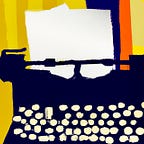SYMBOLS: We Use Them, They Use Us
Several philosophers have said it, but the truth is painful: The worship of a symbol is idolatry but . . . it’s symbol all the way down.
That “it’s symbols all the way down” is and has always been the human condition as we have wrestled to understand and describe the world well enough to survive in it. Symbol is both words and representations — letters, numbers, buildings, paintings. Naming.
This is our glory and our despair as symbol-creating animals. We create symbols because without them, all we have is actions and sounds.
We depend upon symbols and abstractions to describe or conceptualize reality — to point toward it.
Many religious traditions explicitly condemn idolatry, yet, as humans, we’re bound by our cognitive capacities and sensory limitations. Symbols, actions, and sounds are all we’ve got.
As a Unitarian Humanist, I follow in the Transcendentalist tradition of seeking a direct, unmediated relationship with existential reality (all that is, the divine, whatever we call it.). The ineffable, the mystical, experience that is beyond symbol.
The poet, priest, prophet, seer, mage and on strive toward the ineffable, yet necessarily bargain with the power of symbol, and, like riding the wild bull in rodeos, it’s never a question of staying on but only of how long until you lose your grip.
As a religious naturalist, I see our reality as a vast web of interconnected symbols pointing toward a vast web of interconnected meanings that are, no, neither symbols nor meaning nor a web but are interconnected beyond our imaginations.
Yet our imaginations go on creating those images. No, it’s not “symbol all the way down.” It’s all, every way, all the way, to everywhere.
To say it in symbols.
